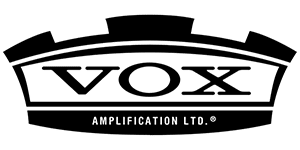
Every huge band of the huge epoch which emblazoned the 1960s had an amplifier with a Vox logo on it. Vox and rock’n’roll came together creating a classic power couple. Vox amps made their way through 60s coming back as a remastered emblem of a Britpop heat wave in the 90s. Anyway most of the blues-driven music of the 60s got its sound processed via Vox system.
The history of Vox goes back to 1940s. Thomas Jennings, the founder of the company, used to repair accordions – quite a popular instrument back than. After the World War II he switched into making church and home consoles. The most popular instrument was Univox. Tom introduced this electronic keyboard with a built-in loudspeaker and tube amplifier in 1951.
It was around 1950s when Dick Denny joined the Vox company. Jennings was thinking to make a guitar amp and when he mey Denny who was a professional guitarist who had already invented some powerful amps himself he took him onboard.
Denny was responsible for the circuit while Jennings developed the design – in 1958 the Vox amp was engineered. Its properties came right in time at the right place - British evolving rock scene wanted to shout loud. AC15 quickly gain weight in reputation among musicians. But soon it was replaced by AC30 – that one was the true amplification hit of the era. Twice as powerful as AC15 was – AC30 entered the market in 1959. AC15, AC30, and AC100 guitar and bass amps were the number one choice of The Beatles throughout the whole period of their existence. The Rolling Stones, Kinks, Yardbirds were in the list of honorable users.
The famous “Connie” or “Continental” was introduced in 1962 becoming as popular as Vox amps. The portable organ could be easily taken in tour and was featured in great songs including House of the Rising Sun by the Animals and Light My Fire by the Doors.
The 60s was also the time for Vox guitars. Clubman and Shadow solid-bodied and bolt-on necked models were presented on the British market. Vox got talked about thanks to the actual peculiarity of its guitars. Brian Jones got his Vox Teardrop (one of the Mark series guitar) and played it for two years. If you haven’t seen it, just look at the shape of it. That’s what Vox guitars were all about – unique. One of the examples of this brand’s unique approach was Guitar Organ. When put in practice it could cause some confusion but the very idea of putting the circuitry of the company’s solid-state organ into a guitar adding a considerable number of knobs and switches is definitely a curious one.
There were some effects pedals produced and applied by Jimi Hendrix and Jimmy Page.
Well, Vox is not a guitar maker. It was a nice experiment but the quality would have never beaten Fender. There could be no second thought about it. Although Vox has recently introduced Starstream Type-1 modeling guitar the core of which is based on the modeling technology. You can trigger 27 different instruments and say hi to those strange Vox hybrids of the 60s with those amazing built-in effects.
The year of 1967 brought Vox to a decline. Jennings left and the company suffered quality deterioration. Even AC30 weren’t considered a top product anymore. It all changed for the better when Vox was purchased by Korg in the 1990s. AC15 and the AC30 got their Celestion Alnico Blue speakers retrieved.
Vox Valvetronix series of amps features Korg’s modeling software which helps the units to reproduce that vintage Vox amp feel, as well as to imitate cult Fender and Marshall ones. StompLab series of multi-effects units incorporates modeling effects and expression pedals for guitar and bass.

